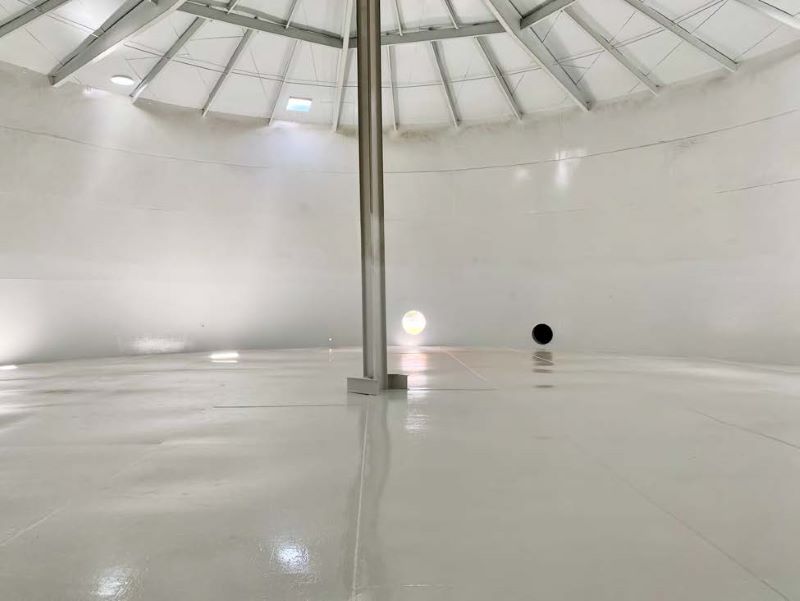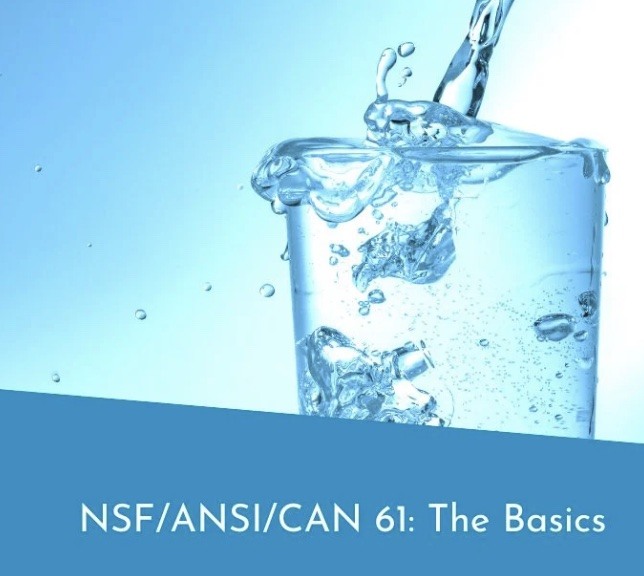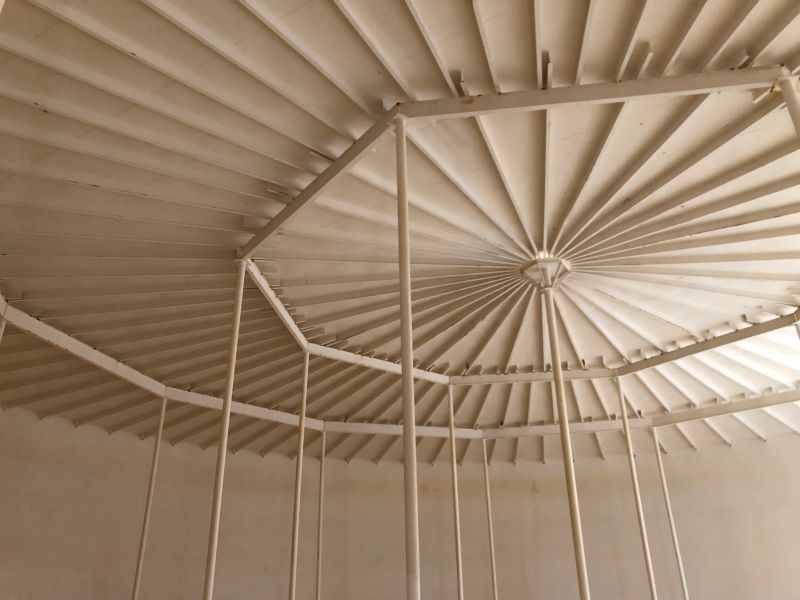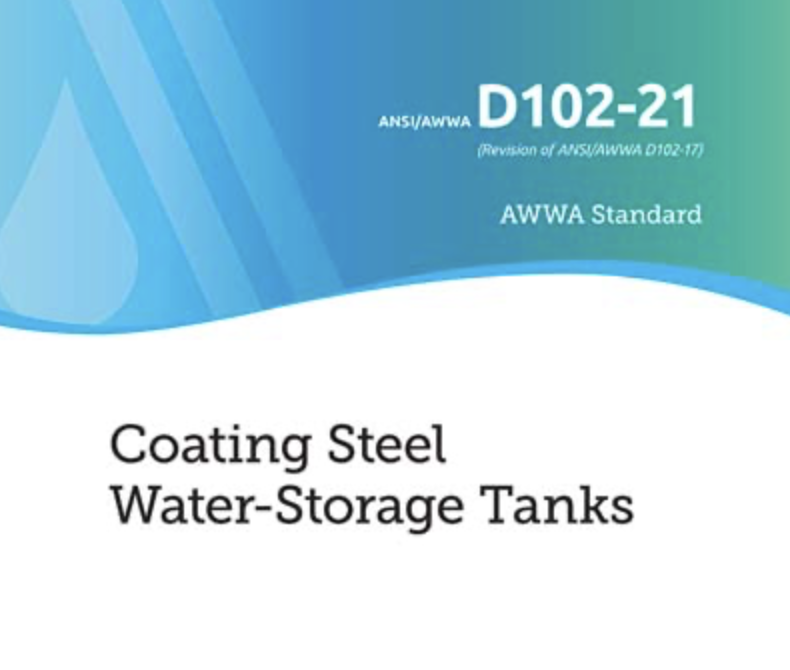
Interior Immersion Grade Coatings: Protecting Water Tanks from Corrosion
Protect potable water tanks from corrosion with high-performance coatings. Learn about their importance, AWWA D102 standards, and how to choose the right coating.
- Rick Gilbreath
Ensuring the longevity and safety of potable water tanks requires specialized coatings that protect against the relentless threat of corrosion.
The Importance of High-Performance Coatings in Immersion Zones of Potable Water Tanks
High-performance coatings are crucial in the immersion zones of potable water tanks because these areas are constantly exposed to water. This exposure increases the risk of corrosion, which can compromise the structural integrity of the tank and the safety of the water it stores. Series 21 Epoxoline, manufactured by Tnemec, for example, will provide a robust barrier that prevents water from coming into direct contact with the tank's metal surfaces, thereby reducing the risk of corrosion and extending the tank's lifespan. Coatings like Series 21 were designed to have a long pot life and with very high solids, so it can be applied easily via single-leg airless spray in one or two coats, whichever meet the project requirements.
In addition to corrosion protection, these coatings also help maintain the water quality by preventing contaminants from leaching into the water. This is particularly important in potable water tanks, where the water is intended for human consumption.
Understanding Corrosion and Its Impact on Water Tanks
Corrosion is a natural and inevitable process that occurs when metals come into contact with various environmental elements, such as oxygen, moisture, and certain chemicals, leading to a series of electrochemical reactions. These reactions result in the gradual degradation and weakening of the metal material over time. In the context of water tanks, this process is particularly concerning because it can lead to metal loss, which can significantly compromises its structural integrity. As rust develops, it can cause the metal to become brittle and fragile, eventually leading to the creation of holes or leaks. These breaches in the tank's structure pose a dual threat: they undermine the tank's ability to safely contain water and also jeopardize the quality of the water stored within.

Moreover, the presence of corrosion is not just a structural concern but also a financial one. It can lead to frequent and costly repairs and maintenance efforts, as tank owners must address the damage to prevent further deterioration. In severe cases, where corrosion has extensively damaged the tank, it may necessitate the complete replacement of the tank, which is a significant investment. Therefore, understanding the impact of corrosion is crucial. By recognizing the signs of corrosion early and taking proactive measures to prevent it, such as applying protective coatings and conducting regular inspections, tank owners can significantly enhance the longevity and functionality of their water tanks.
The Role of Interior Wet Side Coatings in Corrosion Protection
Interior wet coatings, like Tnemec Series 22 Epoxoline, play a vital role in protecting water tanks from corrosion, serving as an essential line of defense against the damaging effects of water exposure. These specialized coatings act as a physical barrier between the metal surface of the tank and the water it holds, effectively preventing the chemical reactions that lead to corrosion. Without such protection, the metal would be vulnerable to the corrosive effects of constant contact with water, which can lead to rust and deterioration over time. The coatings are designed to be highly durable, impermeable and resistant to the harsh conditions within the tank, which include not only constant immersion in water but also fluctuating temperatures and the presence of potential chemical contaminants that could accelerate the corrosion process.

By effectively sealing the metal surfaces, interior wet side coatings help prevent the onset of corrosion, thereby significantly extending the life of the tank and ensuring the safety and purity of the water it contains. This protective measure is crucial because it not only safeguards the structural integrity of the tank but also maintains the quality of the water, which is especially important in potable water systems that house drinking water. These coatings also play a critical role in minimizing maintenance requirements, as they reduce the frequency and extent of inspections and repairs needed to keep the tank in optimal condition. By reducing the likelihood of costly repairs or replacements, interior wet coatings offer a cost-effective solution for tank owners, ensuring that their investment in water storage infrastructure remains secure and efficient over the long term.
AWWA D102 Standards: Ensuring Quality and Longevity
The American Water Works Association (AWWA) D102 standards provide comprehensive and detailed guidelines for the coating of water tanks, which are essential to ensure their quality, durability, and longevity. These standards are crafted to specify not only the types of coatings that should be used but also the precise methods of application and the stringent performance requirements that the coatings must meet to be deemed effective. The guidelines are designed to address a wide range of factors that can affect the performance of coatings, including environmental conditions, the chemical composition of the water, and the specific materials used in the construction of the tanks.
According to Tnemec, a leader in water tank coatings, AWWA D102 standard coatings must possess a high level of resistance to corrosion, which is crucial for protecting the metal surfaces of the tanks from the damaging effects of water and other environmental elements. Additionally, these coatings must adhere exceptionally well to the tank surfaces to ensure a uniform and complete protective barrier. This adherence is vital to prevent any gaps or weaknesses that could allow corrosion to begin. Furthermore, the coatings must be certified as safe for use in potable water systems, ensuring that they do not introduce any harmful substances into the water, thereby safeguarding public health.

By adhering to these rigorous standards, water tank owners and operators can be confident that the coatings they select and apply will provide robust and long-lasting protection. This adherence not only helps maintain the structural integrity of their tanks but also ensures the safety and quality of the water stored within. The AWWA D102 standards serve as a critical resource for industry professionals, offering assurance that their water storage infrastructure will remain reliable and effective over the long term.
Choosing the Right Coating for Your Water Tank
Selecting the right coating for your water tank is essential for ensuring its protection and longevity. Factors to consider include the type of metal the tank is made from, the environmental conditions it will be exposed to, and the specific requirements of the AWWA D102 standards.
It's also important to choose a coating that is certified for use in potable water tanks to ensure that it will not contaminate the water. Consulting with a professional who specializes in water tank coatings can help you make an informed decision and select a coating that will provide the best protection for your tank. Please contact us at High Performance Coatings and we will help write a coating specification that meets the requirements for your specific asset.

NSF-Approved Coatings for Potable Water Tanks
NSF-APPROVED COATINGS FOR POTABLE WATER TANKS
...

Why Interior Dry Space Coatings Are Essential for...
Ensuring the longevity and safety of potable...
